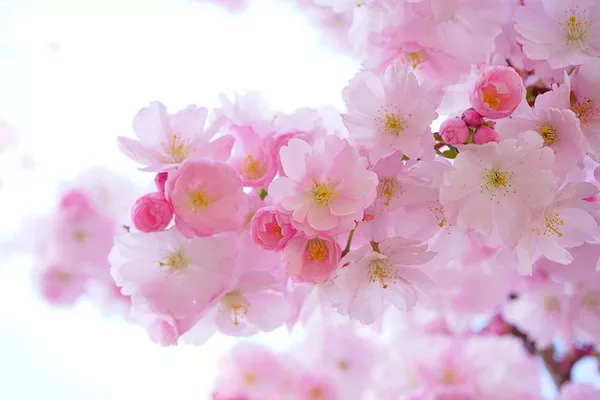In the world of gardening and horticulture, the quest to optimize plant growth and health is a continuous endeavor. Among the myriad of techniques and methods available, using natural substances to improve soil quality and provide essential nutrients to plants has gained significant attention. One such natural remedy is the utilization of eggshells as a supplement for flowering plants. Eggshells, commonly considered waste, possess valuable properties that can contribute to the well-being of flowering plants. This article delves into the benefits of incorporating eggshells into gardening practices and highlights how they can positively impact the growth and vitality of flowering plants.
See Also: Flowers That Flourish with Coffee Grounds as Fertilizer
Nutritional Content of Eggshells
Eggshells are predominantly composed of calcium carbonate, a compound that constitutes a significant part of their structural integrity. Calcium, an essential nutrient for plants, plays a pivotal role in cell division, root and shoot development, and overall plant strength. Incorporating crushed eggshells into the soil serves as a natural source of calcium, aiding in the prevention of calcium deficiency disorders such as blossom end rot in tomatoes and peppers. Furthermore, calcium facilitates the uptake of other nutrients by the plant, promoting balanced nutrition and enhanced growth.
Soil pH Regulation
Maintaining an appropriate soil pH level is crucial for plant health, as it directly affects nutrient availability. Eggshells can be a valuable asset in this regard. While eggshells themselves have a relatively neutral pH, they have the potential to alleviate soil acidity when incorporated into acidic soils. The gradual release of calcium carbonate from eggshells acts as a buffer, helping to neutralize excess acidity and create a more favorable environment for flowering plants. Proper pH regulation enhances nutrient absorption, optimizing plant growth and productivity.
Slow-Release Calcium Source
One of the distinct advantages of using eggshells as a calcium supplement is their slow-release nature. Unlike synthetic fertilizers that can lead to rapid nutrient leaching, crushed eggshells gradually release calcium into the soil over an extended period. This gradual release ensures a sustained supply of calcium to the plants, preventing the risk of nutrient imbalances and wastage. This property is particularly beneficial for flowering plants that require consistent nutrient availability during their growth and blooming phases.
Enhanced Soil Structure
In addition to providing calcium, eggshells contribute to soil structure improvement. Their physical properties, such as their abrasive texture and porous nature, enhance soil aeration and water drainage. When eggshells break down over time, they create small pockets of air in the soil, allowing roots to access oxygen more efficiently. Moreover, improved drainage prevents waterlogging, which can lead to root rot and other water-related issues. Healthy soil structure is paramount for optimal root development and overall plant health.
Reduced Environmental Impact
The utilization of eggshells as a natural amendment aligns with sustainable gardening practices. By repurposing a waste product that would otherwise end up in landfills, gardeners can contribute to reducing their environmental footprint. Additionally, the reliance on organic materials like eggshells reduces the need for synthetic fertilizers, which often have negative ecological consequences such as nutrient runoff and soil degradation. Embracing eggshells as a garden resource fosters a more eco-friendly approach to plant cultivation.
Application Methods
Incorporating eggshells into gardening practices requires proper preparation and application techniques. To make the most of their benefits, follow these steps:
Collect and Clean: Gather eggshells from your kitchen. Rinse them thoroughly to remove any residual egg whites or membranes.
Dry and Crush: Allow the rinsed eggshells to air-dry completely. Once dried, crush them into small pieces. This can be done using a mortar and pestle or by placing the shells in a sealed plastic bag and gently crushing them with a rolling pin.
Incorporate into Soil: Mix the crushed eggshells directly into the soil of your garden beds or containers. Aim for a uniform distribution to ensure even nutrient availability.
Top Dressing: Alternatively, you can use crushed eggshells as a top dressing. Spread them around the base of your flowering plants, taking care not to pile them against the stem.
Composting: Another method is to compost the crushed eggshells along with other organic materials. Over time, the eggshells will break down and contribute their nutrients to the compost, which can then be used as a nutrient-rich soil amendment.
Conclusion
The potential benefits of using eggshells as a supplement for flowering plants are grounded in their nutritional content, soil pH regulation, slow-release nature, and positive impact on soil structure. By incorporating eggshells into gardening practices, enthusiasts can harness these advantages to foster healthier, more robust flowering plants. As a sustainable and eco-friendly option, eggshells offer a natural solution that aligns with the principles of responsible gardening. Whether used as a calcium source, pH buffer, or soil structure enhancer, eggshells exemplify how everyday items can be transformed into valuable tools for cultivating thriving gardens.


